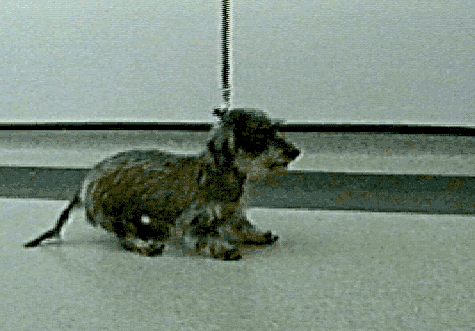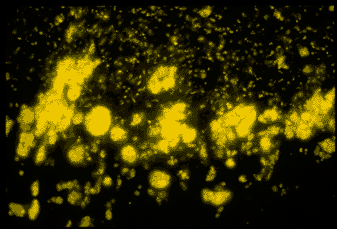First Canine Epilepsy Genes Found!
Researchers at the University of Missouri and University of Toronto heralded in the new year with the discovery of the first genes responsible for epilepsy syndromes in dogs. The reports identify the genes responsible for two rare epilepsy syndromes in dogs: myoclonic epilepsy and ceroid lipofuscinosis. Does this mean we will be able to now eliminate all epilepsy in dogs? No, it is an important first step, but these diseases differ in important ways from the more common form of epilepsy seen in other breeds. None-the-less, these reports demonstrate how the new knowledge of canine genomics can be used to find these disease causing genes. The first epilepsy gene to be discovered in people only caused epilepsy in an isolated fishing village in Finland. That breakthrough, however, led rapidly to discovery of other genes that caused epilepsy in other families. The identification of the cause of seizures in these two breed will hopefully lead to similar progress to solving the more difficult problem of epilepsy in other breeds.
Lafora disease
In a report published in the January 7th issue of Science (Vol 307, Issue 5706, Page 81), Drs. Hanne Lohi, Berge Minassian, and their colleagues showed that mutations in the same gene which causes Lafora disease in people also causes myoclonic epilepsy in Miniature Wirehaired Dachshunds and Basset Hounds. Myoclonic epilepsy is a rare form of epilepsy characterized by jerking attacks. The jerks appear like an exaggerated startle. They may be precipitated by sudden noise or movement or may occur spontaneously. Although there have been isolated reports of myoclonic seizures in other breeds, Dr. Sue Fitzmaurice, a veterinary neurologist in England, first described a family of the Miniature Wirehaired Dachshunds where the disease was clearly inherited. Together with Dr. Clare Rusbridge, another British Veterinary Neurologist, they collected DNA and pedigree information from the family. Dr. Minassian and his colleagues at the Hospital for Sick Children in Toronto localized the myoclonic epilepsy gene to one of the 39 canine chromosomes. They found that the gene responsible for Lafora diseases, a more severe myoclonic epilepsy of people, is in the comparable area of the human chromosome. They then investigated that gene in detail and found a mutation in the gene which prevents the manufacturing of the protein that gene codes for.

A Dachshund with myoclonic epilepsy jerks back on his haunches during an attack while walking. These attacks are very different from the seizures seen in most epileptic dogs. (Photo courtesy Dr. Sue Fitzmaurice.)
Most epilepsy in dogs is characterized by tonic-clonic (grand mal) type seizures. They lose consciousness, stiffen, and fall to their side. This stiff (tonic) phase of the typical seizure rapidly gives way to uncontrolled paddling, the clonic phase. They often salivate profusely and may lose control of their bowels and bladder. These seizures are very hard on the dog and may result in permanent brain damage or death.
In contrast, dogs with myoclonic epilepsy typically do not lose consciousness
during their seizure. They may remain standing during the episode and
continue to try to walk. The seizure consists of a series a very brief
jerks of the muscles. It is similar to a hiccup, but affects the entire
body. The dog may tend to drop with each jerk.
Ceroid Lipofuscinosis
In a report in Biochemical and Biophysical Research Communications published on line December 18, 2004 (Volume 327, pages 541-547, 2005) Drs. Marty Katz, Gary Johnson, and their colleagues at the University of Missouri showed that mutations in the gene responsible for Northern epilepsy in humans causes ceroid lipofuscinosis in in English Setters. These dogs have more classic seizures than in Lafora disease, but they also suffer from other symptoms such as incoordination, vision loss, and mental retardation. There is a steady worsening of their epilepsy in spite of treatment and dogs with ceroid lipofuscinosis die by 18-24 months of age. Dogs with the more common forms of epilepsy are normal between seizures and may live a normal life span.
As in Lafora disease, abnormal proteins accumulate within nerve cells in ceroid lipofuscinosis. These abnormal proteins can be readily identified because they will fluoresce under the microscope. The presence of these fluorescent proteins provided the clue that the disease in English Setters was similar to Northern epilepsy of humans where similar material accumulates. The Missouri group was then able to investigate the equivalent gene in the affected dogs and found the mutation responsible for the disease.

As in Lafora disease, abnormal material builds up in brain cells in dogs with ceroid lipofuscinosis. This abnormal material fluoresces yellow in this brain section from an affected dog when viewed under the microscope. Such protein accumulations do not occur in most epileptic dogs. (Photo courtesy Dr. Marty Katz)